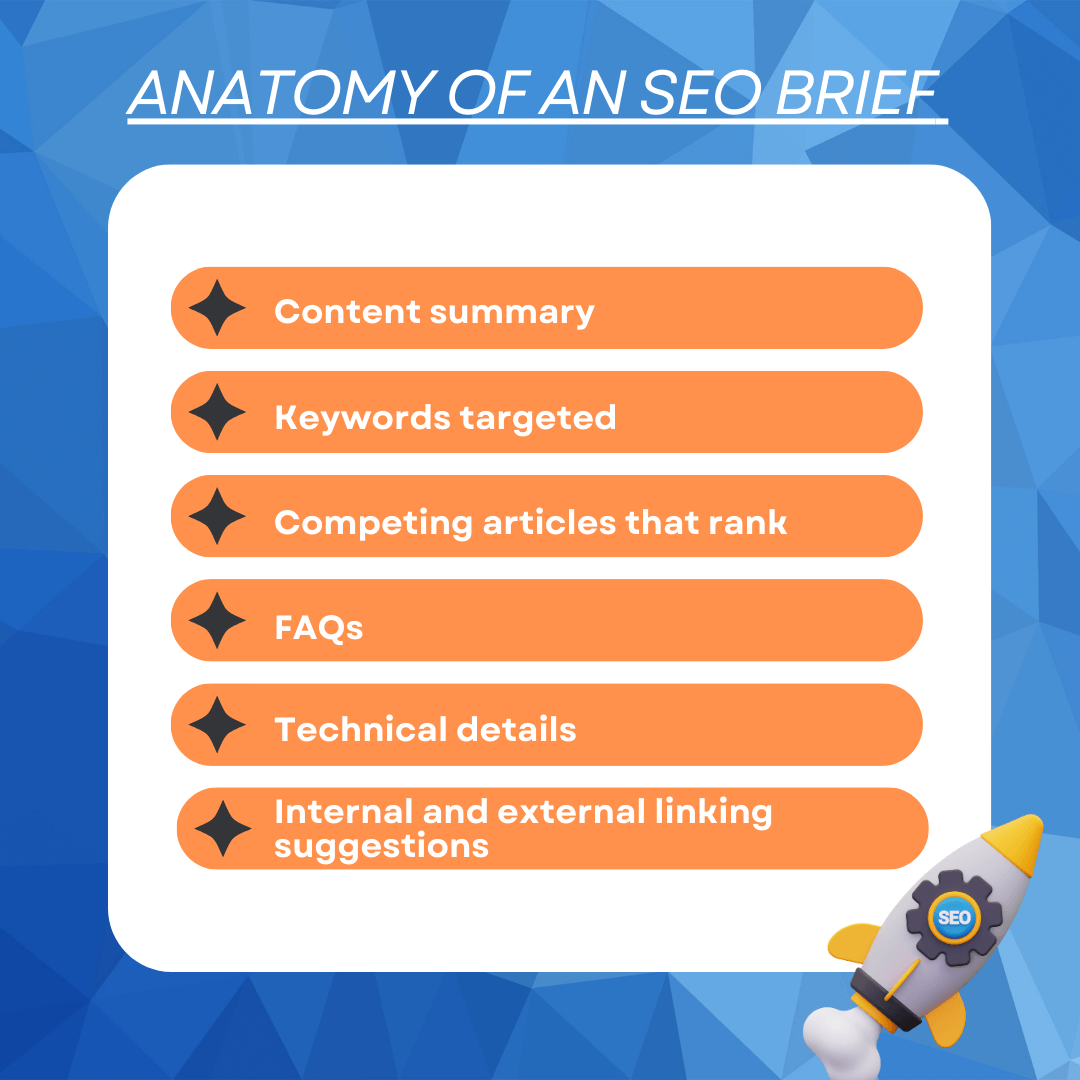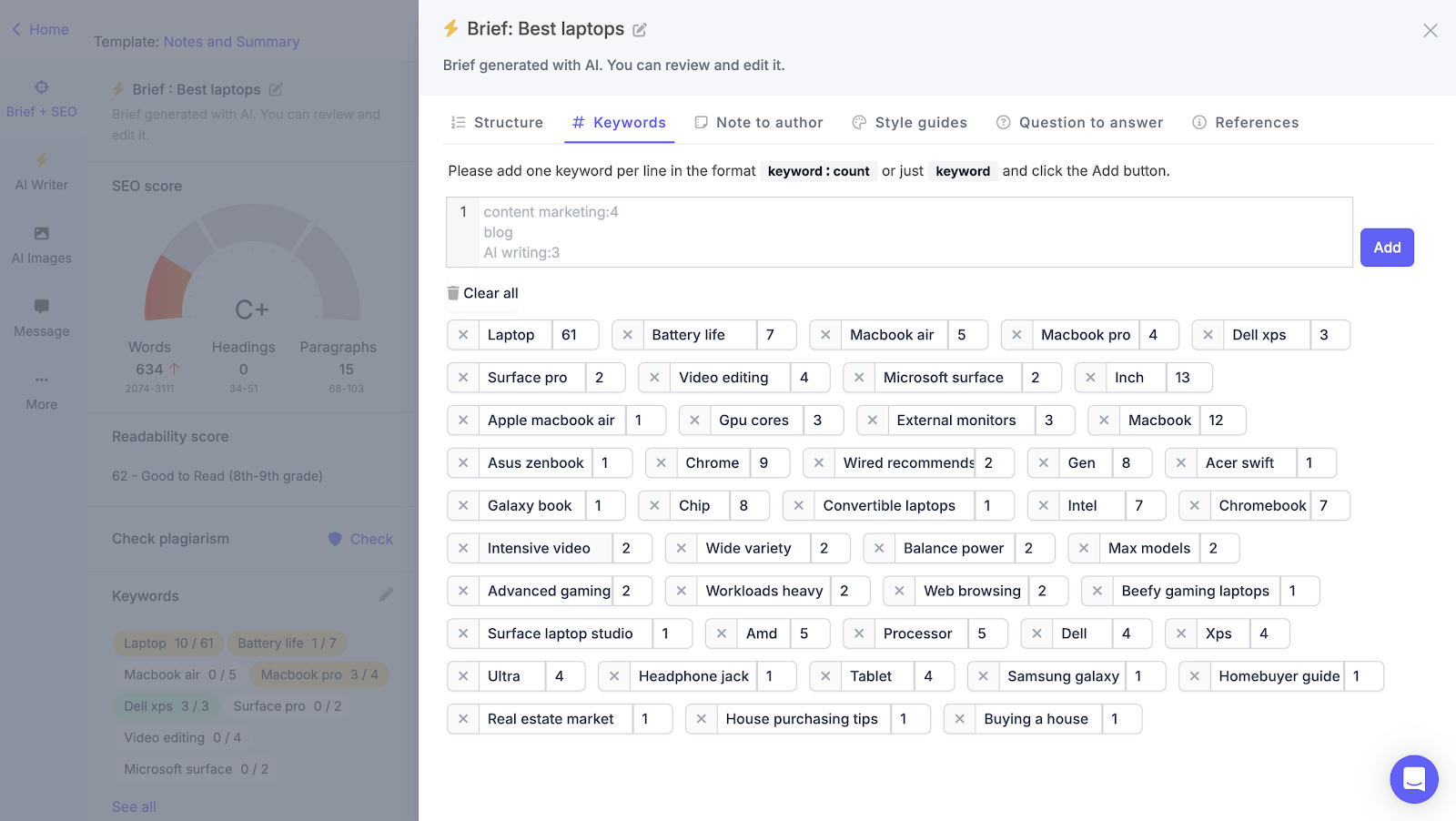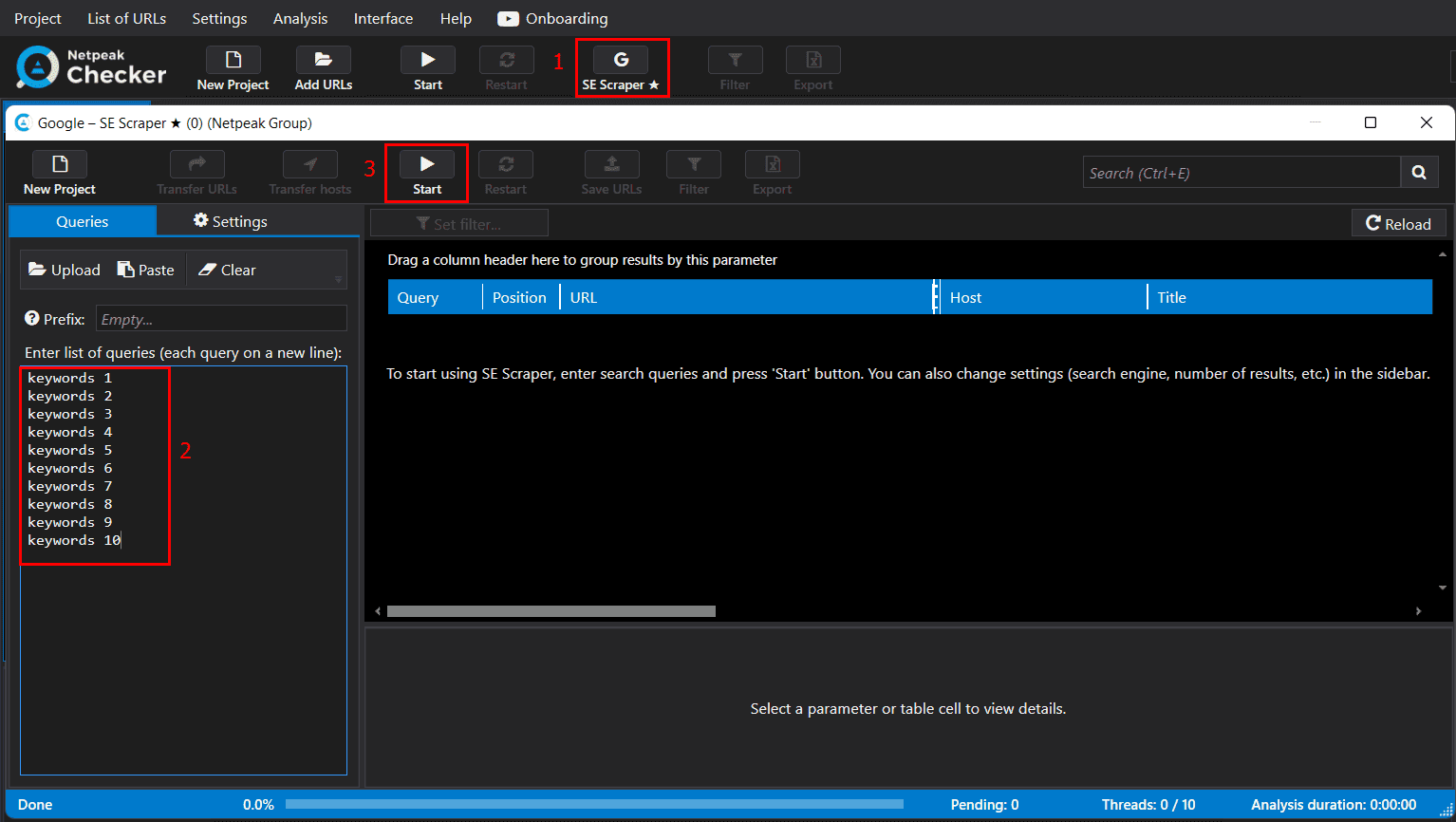How to Create Comprehensive SEO Briefs
How to
For the majority (61%) of marketers, investing in SEO is the main focus of inbound marketing. (HubSpot State of Marketing Report 2023)
Every marketer's dream is to get the top spot on Google search results. However, reaching that coveted spot comes with its own challenges. Skip any essential SEO element or lose sight of your article's original intent, and your attempts to create meaningful content might not succeed. The solution? SEO briefs.
An SEO-focused content brief provides the necessary framework to capture the content's essence and help it rank high on Google. This step-by-step guide will explain everything you need to know for creating effective SEO briefs.
What is an SEO brief? How is it different from a basic content brief?
An SEO brief is a document that outlines content goals, target audience, and desired outcomes of an SEO campaign. It essentially merges technical SEO advice with content guidelines, offering a roadmap to optimize content for better search rankings. It also ensures that everyone involved in a content project is on the same page.
While a basic content brief focuses only on content creation and formatting, an SEO brief covers a broader range of SEO strategies, including keyword optimization, internal links, meta description, title, and more.
Here's the basic anatomy of an SEO content brief -
- Content summary
- Keywords targeted (primary and secondary)
- Competing articles that rank
- FAQs
- Technical details (metadata details, desired character count, and specific SEO directives)
- Internal and external linking suggestions

If creating SEO briefs from scratch seems like a daunting task, Narrato's AI blog writer comes with an in-built AI SEO brief generator to make the job simpler. Simply input your primary keyword, and this tool will automatically generate an SEO brief, with all the necessary components -
- Content structure (Paragraph, heading and word count)
- Keyword suggestions
- Competitor references
- Questions to answer (in content or FAQs)
- SEO score to track your content optimization efforts
- Style Guides and Note to Author for additional SEO instructions
The tool also offers a readability score, plagiarism checker, and AI content creation tools to help with your content optimization tasks.

You can customize this brief to suit your requirements. To further enhance the AI-generated brief with additional SEO elements, we suggest using Netpeak Software's SEO analysis tools. Netpeak Spider can be incredibly useful for competitor research and finding gaps in your content.
Benefits of creating SEO briefs
Why should we invest time in creating SEO briefs, you might ask? Here are some convincing reasons:
- They encapsulate your SEO strategy, offering a clear roadmap to success
- They make it easier to communicate your SEO plans to team members and clients
- They can help you identify and fix gaps in your current SEO strategy
- They help you better understand your competition, so you can stay ahead of market trends
How to create effective SEO briefs
Whether you're planning to build your SEO brief or simply looking to add all the essentials to an existing one, here's a step-by-step guide for creating a detailed roadmap that leads you straight to stronger online visibility.
Step 1. Research keywords
To create an effective SEO brief, you must first lay a solid foundation, which begins with keyword research. Keywords play an important role in a successful SEO strategy by helping search engines understand the intent behind a search query. Start by brainstorming the main topics and themes related to your website or blog post. Then use keyword research tools to find relevant keywords with low competition and high search volume. There are a few free Google tools that might be a good fit: Google Search Console and Keyword Planner.
Netpeak Checker can also help in researching keywords. Even though it is not specifically a keyword research tool, it's fantastic for bulk SERP scraping.
When conducting keyword research, don't forget to take into account long-tail keywords. These phrases specifically target a more niche audience. Although there may be less competition for these keywords, they can still generate highly targeted traffic for your website.
With that, you'll have a list of primary and secondary keywords to add to your content brief.
Step 2. Find audience search intent
The second step is to understand your audience's search intent. What keywords do they use when searching for your services? And more importantly, what are they hoping to find with these searches? Building your audience persona will help you uncover these questions. Start by identifying your target demographic, and use web analytics tools to learn about their online behavior, preferences, goals, and pain points. Check out this detailed guide on creating marketing personas that might help.
Once you've created an audience persona, figuring out their search intent will be easy. With a list of relevant keywords and knowledge about your audience, you can easily understand what they're seeking when they use certain search terms. To narrow down the search intent even further, it's a good idea to check out the related searches for your target search term.
Step 3. Analyze competitors
The next step is competitor analysis.This includes looking into the keywords they are ranking for, the type of content they are creating, and the keywords they've missed in their SEO strategy. By analyzing your competition, you can gain valuable insights into your industry positioning and discover potential growth opportunities.
To identify competitors, start by using Google. Simply type in a word that relates to your business or product, and scroll through the search results. For detailed information on the most popular pages, try using 'SE Scraper' feature in Netpeak Checker. Websites highlighted by Netpeak Checker's results could possibly be your competitors.

Don't forget to include all your main competitors in your competitive analysis. This isn't just about beating them in rankings, but also understanding their strategy so you can counter it effectively. Here's a detailed guide on competitor analysis that could help you during the process.
Step 4. Add instructions about on-page SEO elements
Now that you've covered the basics of SEO in your brief, it's time to dive into the specifics of on-page SEO elements. These elements play a crucial role in improving the visibility of your website on search engine pages. Here are a few key instructions to include in your SEO brief:
- Include relevant keywords naturally throughout the content (in headings, subheadings, and meta tags)
- Optimize the title tags and meta description for each page with relevant keywords
- Ensure the URL structure is clean and concise, incorporating keywords wherever applicable
- Optimize images with descriptive alt tags and file names, while including keywords
- Create unique, high-quality content that offers value to readers
These elements guide search engines in making sense of your content's context and relevance, which in turn has an impact on your search ranking and online visibility. With tools like Narrato's AI SEO brief generator, most of these are already taken care of and any additional instructions can be manually added in the 'Note to author' or attached as style guides.
Step 5. Create a content outline
Your last step should be creating a comprehensive content outline. This lays the groundwork for what your content will look like. It should include keywords, and tags, and an overview of the topics you will cover. Having a solid outline not only helps with writing the content but also making sure it's optimized and cohesive from an SEO perspective.
With this, you'll have completed all the basic steps required for building an SEO brief. In the end, combine all the information you've collected. Don't forget to include writing and formatting guidelines for writers to follow. If you want your team to use AI tools or ChatGPT prompts for SEO content creation, this is where you can communicate your instructions regarding AI content generation. Using AI content generation tools can result in faster and more consistent SEO content production.
Wrapping Up
The world of SEO is ever-evolving, and keeping up with these changes can be a daunting ask. However, well-crafted SEO briefs can steer your website optimization efforts in the right direction. Ultimately, it's a combination of smart strategies, research, and applying the information gathered in an SEO brief that will make or break your website's success in the digital world.
Invest your time and effort in creating comprehensive SEO briefs and stay ahead of the game. It's well worth the investment.



